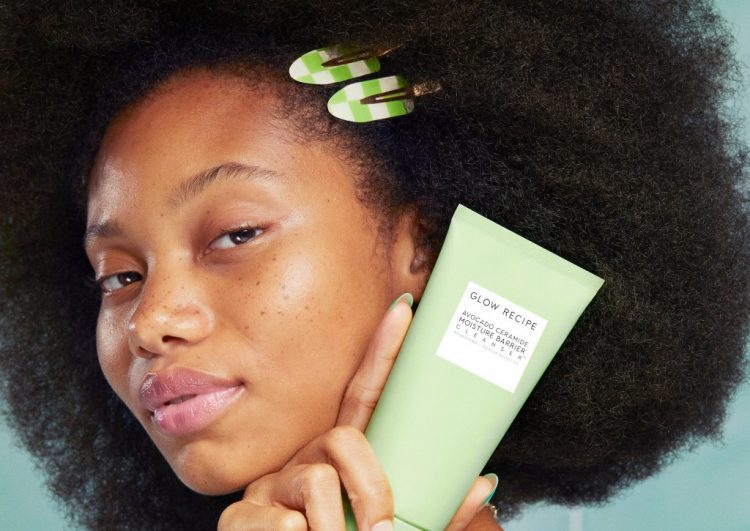There’s no denying skin barrier health is one of the buzziest skincare topics this year. Between creams that promise to fortify and serums that are designed to protect, there’s no shortage of skincare products formulated to support your skin’s barrier health.
But now, we’re taking it one step further, and focusing on keeping your skin’s microbiome — the top layer of your skin barrier — happy and healthy. And we’re doing so with the help of biotic skincare. And no, we’re not just talking about probiotics, like the kind found in your morning yogurt that’s touted for good gut health; we’re spotlighting prebiotics and postbiotics, too.
With the expert knowledge of NYC-based dermatologist Marisa Garshick, MD, we’re here to help you navigate the world of biotic skincare. Here, we’re breaking down the key differences between each type, and explaining which ones work in your skincare formulas and which ones don’t. Read on to learn more.
What are the differences between pre-, pro-, and post-biotics?
We know you’ve heard your favorite wellness influencer wax poetic about probiotics, but there are actually more than one kind of biotic. Biotics come in three different forms: pre-, pro- and post-biotics, and all play a different role when it comes to your skin’s health. According to Dr. Garschick, here’s what you need to know about each:
- Prebiotics help to feed, support, and stimulate the growth and activity of existent bacteria in the body, benefiting the good bacteria in particular.
- Probiotics are live cultures that balance out the skin’s natural microbiome, but are not ideal to include in skincare formulations. (More on this later.)
- Postbiotics refer to compounds that living bacteria release after they are metabolized, which can have beneficial effects by decreasing inflammation, improving healing, or having an antibacterial effect. In other words, postbiotics refer to the output from healthy good bacteria living naturally on our skin that work to keep the skin healthy.

What is the skin’s microbiome?
The skin barrier is just a blanket term for the outer surface of your skin and has 3 different layers: microbiome, acid mantle, and lipid layer. The microbiome refers to the microorganisms that live on the skin and comprise the skin flora, which can actually be helpful to protect the skin, help boost immunity, keep pH in balance, and more.
“If the skin microbiome is disrupted, it can become dry, irritated and inflamed, more prone to injury and damage and because your skin barrier can be affected, it can impact the way your skin reacts to various products or to outside stressors,” says Dr. Garschick. That’s why it’s important to keep it in good shape with barrier-supportive skincare products — inclusive of biotic skincare.
How does biotic skincare play a role in my skin’s microbiome health?
Pre- and post-biotics can be helpful to support your skin’s barrier health by protecting and strengthening the skin’s microbiome. Like we mentioned, prebiotics serve as the fuel for good bacteria, keeping them nourished and strong so they can help protect your skin. Postbiotics, meanwhile, are those beneficial byproducts created by good bacteria.
Probiotics, on the other hand, are a hard sell for skincare formulas. As Dr. Garshick mentions, probiotics refer to living bacteria, so it can be challenging to create formulas that contain live bacteria since there’s no guarantee that the bacteria will still be alive when it comes into contact with the skin. Plus, “skincare products also have preservatives to help prevent overgrowth of harmful bacteria and it is possible this may also impact live good bacteria as well,” she says. And finally, many different probiotics exist — so there is no guarantee that the specific probiotic will be the one you need to address your skincare concern.

How do I incorporate biotic skincare into my routine?
We suggest sticking to products that contain pre- or post-biotics, and skipping those with probiotics altogether — that way, you can be sure you’re getting proven benefits. We’ve formulated our calming, soothing, and restorative Avocado Ceramide Moisture Barrier Cleanser with pre- and post-biotics to help balance your skin keeping your skin’s barrier and microbiome hydrated and nourished while washing away the day.
With a comprehensive list of barrier-boosting ingredients like ceramides, colloidal oatmeal, and avocado oil, it gently yet effectively dissolves excess oil, makeup, and sunscreen all without stripping your skin of necessary moisture. In fact, testing has shown that the ingredients actually continue to work after you rinse, delivering lasting moisture and comfort to skin.
Read more about supporting your skin barrier:
Source by blog.glowrecipe.com


